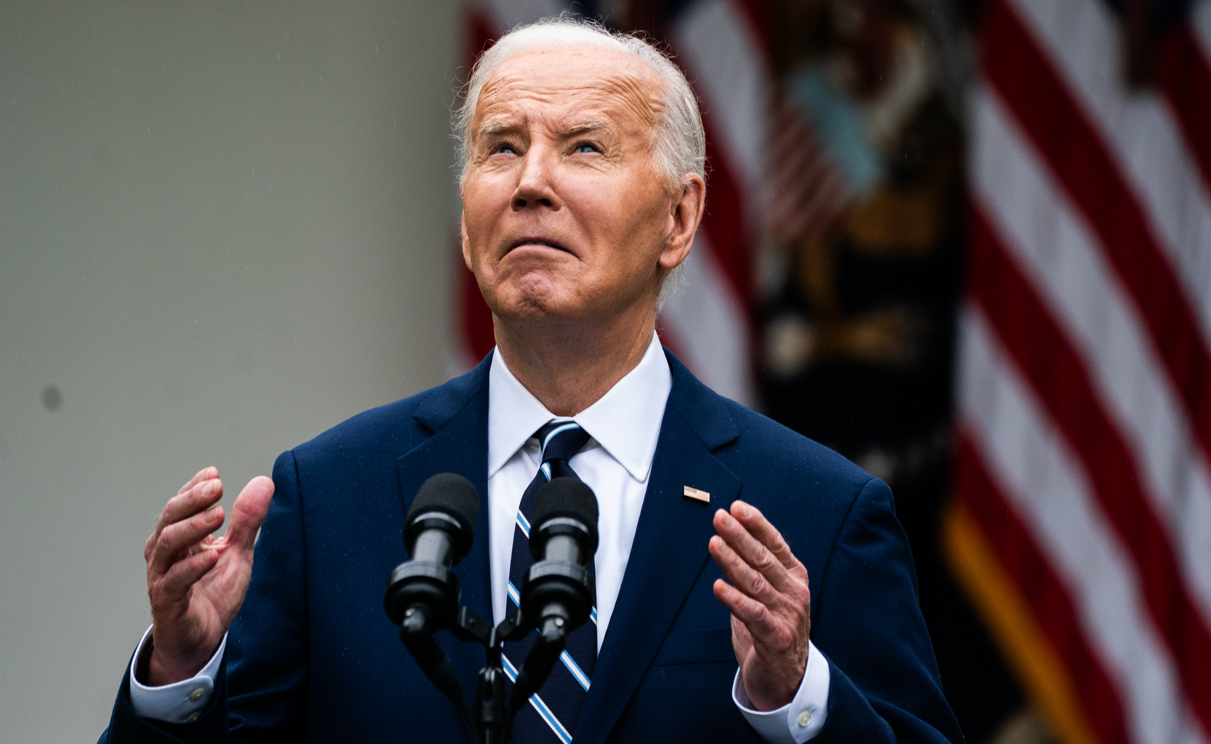Fitness
Boutique Gyms Surge Amid Shifting Post-Pandemic Landscape

By Benjamin Raziel
Four years into the 2020s, the fitness industry has undergone two rapid transformations.
The COVID-19 pandemic dealt a heavy blow to big-box gyms filled with exercise machines, treadmills, free weights, and cardio stations. For nearly two years, these facilities were largely empty while at-home fitness alternatives, like the cycling giant Peloton, skyrocketed in popularity.
Now, the fitness world is shifting again. People are no longer interested in working out alone in their spare rooms or garages, longing instead for a sense of community and direction. But this desire for camaraderie and specificity hasn’t spurred a return to pre-pandemic exercise norms.
“Big-box gyms have re-opened, but many people no longer find them appealing,” said fitness entrepreneur Anthony Geisler. “People like the specialized, guided nature of at-home workout products like Peloton, but they want to conduct those workouts with other like-minded folks. They want to meld specificity with community.”
TORONTO, ONTARIO, CANADA – 2016/05/13: La Fitness establishment entrance with company’s logo on the … [+]
The fitness industry has rushed to embrace this new demand, Geisler explained. Elements of the pre-pandemic in-person fitness model have been infused with a focus on personalization that consumers have come to expect. People want to exercise together in specialized classes, but the emphasis on health demanded by the pandemic has led to smaller class sizes. From cycling to Pilates, workout programs that once accommodated 50 students per class have decreased to just 18 to 20.
“The future of fitness will be centered around curated experiences. People want to exercise together while still getting a personalized workout,” Geisler said.
Smaller class sizes aren’t just a response to wider health concerns. Fitness enthusiasts want to share their workouts with familiar faces while undertaking expert-guided sessions. Studies show that group exercise is more enjoyable than isolated exercise and promotes accountability and consistency.
Boutique gyms have flourished within this new paradigm. These facilities offer a curated alternative to traditional gyms while still creating a sense of community that was missing from the fitness world. They are also differentiating themselves by offering, in many cases, exclusively group classes, as well as incentives to consistently attend and engage with fellow participants.
“While we’ve entered a new period of innovation within the fitness industry in which brands are experimenting to make group exercise more meaningful and enjoyable than ever, one thing is clear: the boutique fitness experience is here to stay,” said Geisler.
In just ten years, fitness brands like Orangetheory and Barry’s Bootcamp, which offer specialized classes that blend different training structures, have helped communities across the country reach their fitness goals. These brands combine high-intensity interval training (HIIT) with strength and mobility training to offer subscribers a more acute and considered workout.
NEW YORK, NEW YORK – FEBRUARY 28: Hannah Berner attends the Orangetheory Fitness Event: “WTF is … [+]
These brands have built communities of avid subscribers whose willingness to recruit new members has become an invaluable marketing tool.
“Our community is a huge driver for bringing in new customers,” said Barry’s Bootcamp CEO Joey Gonzalez in a recent Forbes article. “Our clients become brand evangelists and want to share their experience with their own networks. Even celebrities willingly share by word-of-mouth and on social media.”
The resurgence of group workouts may signal that consumers have grown tired of exercising in isolation or receiving their workout routines from a screen. Geisler said this mass rejection of at-home exercise presents the fitness industry with an opportunity to innovate on the old models that have long dominated the industry.
“We’ve all experienced the limits of technology in facilitating an online fitness community,” Geisler said. “While technology has led to some important innovation within the industry, consumers have made it clear that they want social fitness experiences that are tailored to them. It is up to the brands and entrepreneurs to facilitate these experiences in new, innovative ways.”

Fitness
Hypertrophic cardiomyopathy: New rules say you can exercise

About 1 in 500 people have hypertrophic cardiomyopathy (HCM).
It’s a condition where the heart muscle becomes abnormally thick.
HCM is one of the most common causes of sudden death among young athletes and otherwise healthy adults.
In the past, athletes and other patients with hypertrophic cardiomyopathy were told to sit on the sidelines.
But it may be time to get back into the game.
The American Heart Association and the American College of Cardiology recently released new guidelines on this condition.
The guideline’s writing committee chair and Mayo Clinic Hypertrophic Cardiomyopathy Clinic medical director Dr Steve Ommen says that with exercise and proper medication management, patients can return to their normal daily routines.
“Hypertrophic cardiomyopathy should not be an automatic disqualification from pursuing sports,” he says.
Patients with HCM might benefit from being active, he notes.
“Our current recommendations are that patients with hypertrophic cardiomyopathy participate in low to moderate intensity exercise as part of a healthy lifestyle, and that it’s reasonable for them to do more vigorous activities as well,” he says.
A new class of medications is on the roster, giving patients more options to manage their disease.
“Usually, there’s some simple medications the patient may try first, and then, if that’s not effective, they will have an option of this medication; an older medication called disopyramide; an operation called surgical myectomy; or a catheter-based solution, alcohol septal ablation,” Dr. Ommen explains.
It’s a good idea to check with your healthcare team before making changes to medications or daily routines.
HCM symptoms include:
- Chest pain, especially while exercising.
- Fainting during or after physical activity.
- Shortness of breath during exercise.
- Heart palpitations or rapid heartbeats. – Sonya Goins/Mayo Clinic News Network/Tribune News Service
Fitness
Swimming vs. running: Choosing the better exercise for your body

Anyone picking a new exercise routine won’t lack for opinions from among the tens of millions of runners and swimmers in the U.S. There are passionate communities on both sides that will tell you their sport is superior.
Better to ask someone who does both.
“I tolerate swimming to be able to do sports we like, to travel to cool places and race together,” says Jacob Gilden, a 36-year-old competitive triathlete and swimrunner. “But if I was less injury-prone, I would probably be doing a lot less swimming and a lot more running.”
His wife, Liz Gilden, a former professional triathlete herself, also loves running, but the 36-year-old says that age has changed the equation. Swimming isn’t as hard on the body, she says: “We can’t really run as much as we used to. So supplementing swimming really helps preserve that aerobic capacity.”
We all know the basics: Both running and swimming can boost your cardiovascular and mental health. Doing either is generally better than doing nothing.
How to decide which is better for you? We talked to experts to determine the factors—including your training, injury history and natural affinity—that play into the decision.
Born to run
Contrary to popular belief, running doesn’t have to destroy your knees and can actually benefit them. Some exercise scientists and researchers say that, with the proper routines, people can continue running into their 60s and 70s—or maybe even later.
Careful and informed training for a marathon can have a protective effect on knee joints of sedentary people without prior knee pain or issues, according to a pair of published studies from 2019 in the BMJ and 2020 in Skeletal Radiology.
Using magnetic resonance imaging, or MRI, researchers analyzed the knee joints of dozens of middle-aged, first-time marathoners. Many people assume that joints, bones and muscles wear down over time like car parts, says Alister Hart, a professor of orthopedics at University College London and the chief investigator of the studies.
But our body parts are biological, he says. “By doing exercise, they actually repair, renew and improve.”
Because running is a load-bearing exercise, research suggests it can build bone health. “We know that bones respond to force,” Hart says. “Running improves your knees by improving the quality of the bone on either side of the knee joint.”
But runners shouldn’t do anything too vigorous or bear too much weight until their bodies are able to manage. Instead, they should start out with easy runs and gradually increase the intensity and mileage.
“We don’t want someone who’s not conditioned to run to jump into running,” says Laura Richardson, a clinical associate professor of applied exercise science and movement science at the University of Michigan.
That includes people with arthritis and joint pain or those who are recovering from an injury or surgery. They may want to opt for swimming instead of running, researchers say.
“If you had a soccer injury at a young age, and you ruptured your cruciate ligament, and you never had it repaired, you’re going to be running on a joint that’s going to be not moving normally,” Hart says. “Your risk of developing joint damage is real.”
High-water marks
Proponents of swimming point to the fact that it activates muscles throughout your body, while running mainly works the lower body.
And because moving through water can be less harsh on the body than pounding pavement, swimming is often useful for rehabbing from injuries—including overtraining in running—and for those seeking joint-friendly exercise, says Scott Trappe, the director of the Human Performance Laboratory at Ball State University. Regular swimming has been found to reduce joint pain and stiffness associated with osteoarthritis.
Other health benefits have gotten less attention.
Researchers found that masters athletes, including swimmers, cyclists and triathletes—with the average age of 57—had more satisfying sex lives and better sexual function than the general population. The study’s subjects mostly consisted of swimmers but a small percentage of participants took part in other activities such as running and rowing.
“The take-home message is that swimming can enhance sexual function to an older age,” says Hirofumi Tanaka, the director of the Cardiovascular Aging Research Laboratory at the University of Texas at Austin and senior author of the 2023 study, which was published in the International Journal of Sexual Health.
One potential downside of swimming, exercise scientists say, is that it might require more training to get the benefits.
“You have to have a good skill to raise your heart rate up,” Tanaka says.
‘Intrinsic excitement’
Running and swimming can both be physically demanding and even risky, so experts recommend easing into both.
The trick is determining what intensity of an aerobic activity you can maintain in a continuing program, says the University of Michigan’s Richardson. “It’s a matter of finding that sweet spot.”
And when it comes to picking one or the other, the best choice is probably the one that you’ll stick with consistently. “If putting on your shoes and running outside seems like a challenge, then maybe you need to pack your bag and go to a local pool,” Richardson says. “So whatever feels like you have a little intrinsic excitement about doing, that’s the one you’ve got to do.”
View Full Image
Fitness
Workout Wednesday: Exercises using a chair

FRESNO, Calif. (KFSN) — A few exercises can really help your core.
In this week’s “Workout Wednesday,” fitness trainer Rhonda Murphy shares a couple of ways you can get more for your money, using a chair.
Copyright © 2024 KFSN-TV. All Rights Reserved.
-

 Politics1 week ago
Politics1 week agoOakland mayor breaks silence after FBI raid: ‘I have done nothing wrong’
-

 News1 week ago
News1 week agoWhere Joe Biden and Donald Trump Stand on the Issues
-

 Politics1 week ago
Politics1 week agoPopular Republican and Trump running mate contender makes first Senate endorsement in 2024 races
-

 News1 week ago
News1 week agoToplines: June 2024 Times/Siena Poll of Registered Voters Nationwide
-

 Politics1 week ago
Politics1 week agoFox News Politics: Trump Ungagged…Kinda
-

 Politics1 week ago
Politics1 week agoObama again stepping into role as Joe's closer ahead of Trump v Biden rematch
-

 News1 week ago
News1 week agoIowa floodwaters breach levees as even more rain dumps onto parts of the Midwest
-

 News4 days ago
News4 days agoVideo: How Blast Waves Can Injure the Brain














